This Is Why The 2018 Nobel Prize In Physics, For Lasers, Is So Important

This year’s prize represents not just a single example of brilliant work, but generations of advancements that led to it.
Every year, the most prestigious prize in the most fundamental of the natural sciences is given out: the Nobel Prize in Physics. Some recent prizes have literally shook our understanding of the Universe, from the discovery of dark energy to the Higgs boson to the first direct detection of gravitational waves. Others have been more obscure but no less important, such as for the development of the blue LED or advances in topology as applied to materials. This year’s prize goes to Arthur Ashkin, Gérard Morou, and Donna Strickland, for groundbreaking inventions in the field of laser physics.
At first glance, this might not seem to be such a big deal, given how commonplace lasers are. But if we look closer, you’ll understand why it’s not only Nobel-worthy, but why it’s so meaningful for the human enterprise of science.
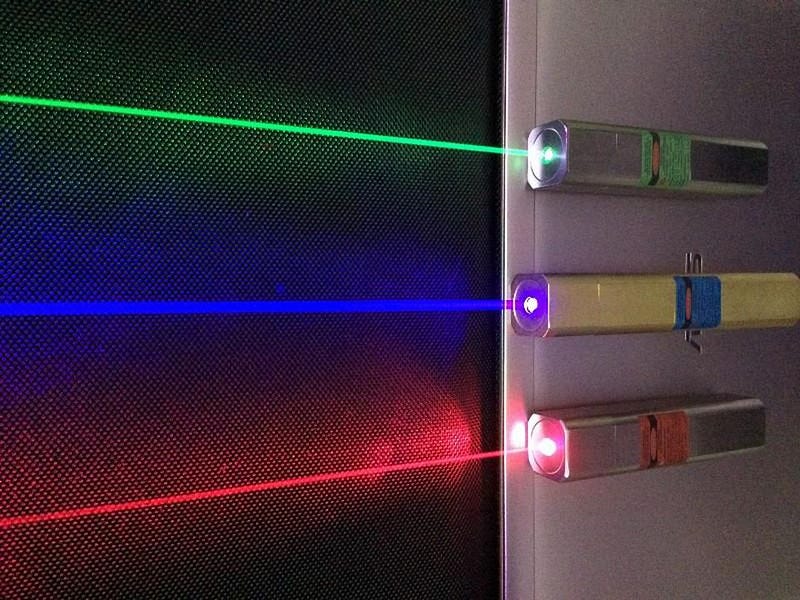
It’s easy to take lasers for granted; in 2018, they’re everywhere. Light may be a wave, but producing light that’s coherent (in-phase), monochromatic (all the same wavelength), and high-powered are some of the reasons lasers are so special. Lasers are used in LIGO, for example, to measure tiny changes in spatial distances when a gravitational wave passes through. But they also are used for atmospheric remote sensing, for measuring the distance to the Moon, and for creating artificial “guide stars” in astronomy.
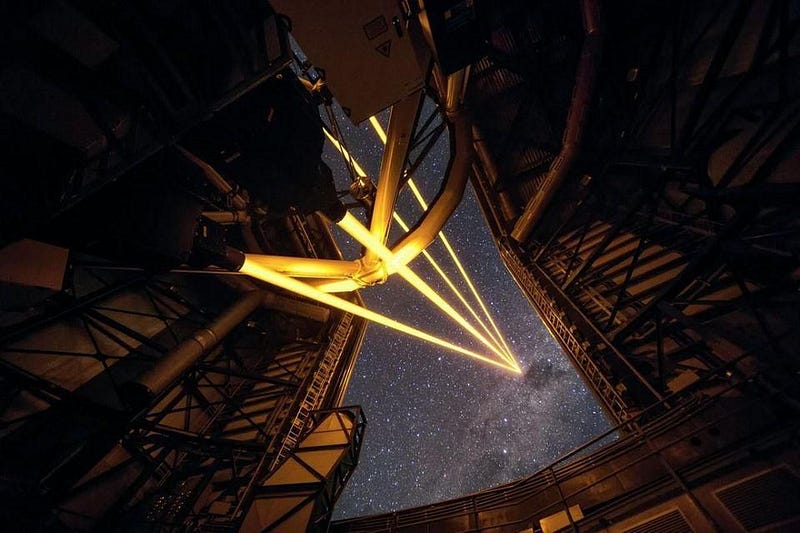
But lasers go well beyond mere scientific applications. They’re used in laser cooling, which achieves the lowest temperatures ever reached and confines atoms into special states of matter known as Bose-Einstein condensates. Pulsed lasers are the essential component in inertial confinement fusion: one of the two main ways humanity is attempting to develop nuclear fusion here on Earth.
There are military applications, like laser sights and laser targeting, medical ones, like eye surgery and cancer treatment, and industrial ones, like laser etching, welding, and drilling. Even the barcode readers at your supermarket are laser-based.
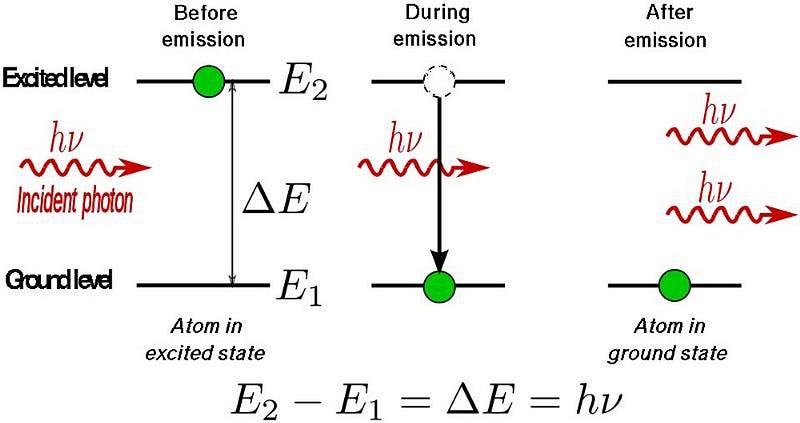
The very idea of a laser itself is still relatively novel, despite how widespread they are. The laser itself was only first invented in 1958. Originally an acronym standing for Light Amplification by Stimulated Emission of Radiation, lasers are a bit of a misnomer. In truth, nothing is really being amplified. They work by taking advantage of the structure of normal matter, which has atomic nuclei and various energy levels for its electrons to occupy. In molecules, crystals, and other bound structures, the particular separations between an electron’s energy levels dictate which transitions are allowed.
The way a laser works is by oscillating the electrons between two allowable states, causing them to emit a photon of a very particular energy when they drop from the higher-energy state to the lower one. These oscillations are what cause the emission of light. We call them lasers, perhaps, because no one involved thought it was a good idea to use the acronym Light Oscillation by Stimulated Emission of Radiation.
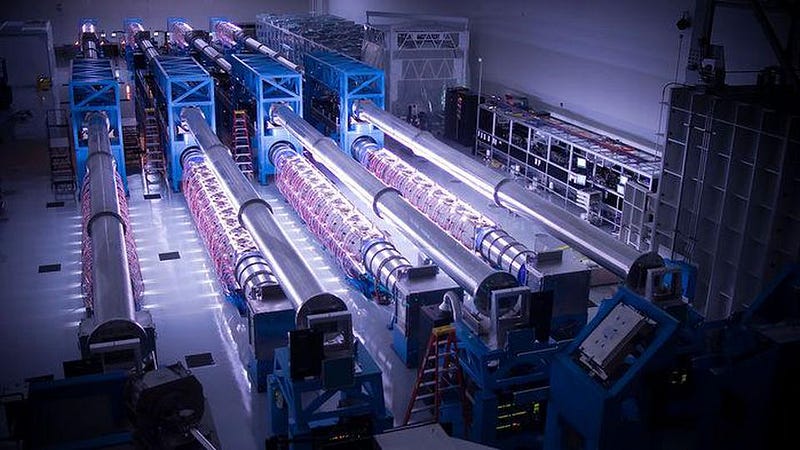
Since it was first invented, there have been a number of ways humanity has devised of making a laser better. By finding different materials that enable you to make electron transitions at different energies, you can create lasers with a wide variety of specific wavelengths. By optimizing your laser’s collimation design, you can increase the density of laser light tremendously at large distances, creating many more photons-per-unit-volume than you would otherwise. And using a better amplifier, you can simply create a more energetic, powerful laser overall.
But what’s often more important than power is control. If you can control the properties of your laser, you can open up an entire new world of possibilities for probing and manipulating matter and other physical phenomena in the Universe. And that’s where this year’s Nobel Prize comes in.
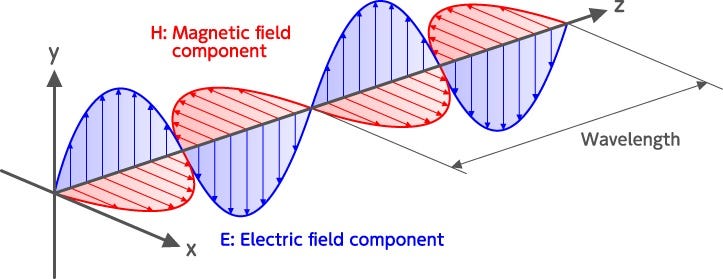
Light, no matter what type it is or how it’s produced, is always an electromagnetic wave. That means, as it travels through space, it creates oscillating electric and magnetic fields. The strength of these fields increases, decreases, reverses directions, and continues on in that oscillating pattern, with both electric and magnetic fields being in-phase and perpendicular to one another.
If you can control the fields arising from that light, by controlling the direction and magnitude of the electric and magnetic fields in a particular region of space, then you can manipulate the matter at that location. The ability to manipulate matter like that is embodied in the science fiction technology of the tractor beam. And this year, half the Nobel Prize goes to the development of Optical Tweezers, which are basically the real-life version of that.
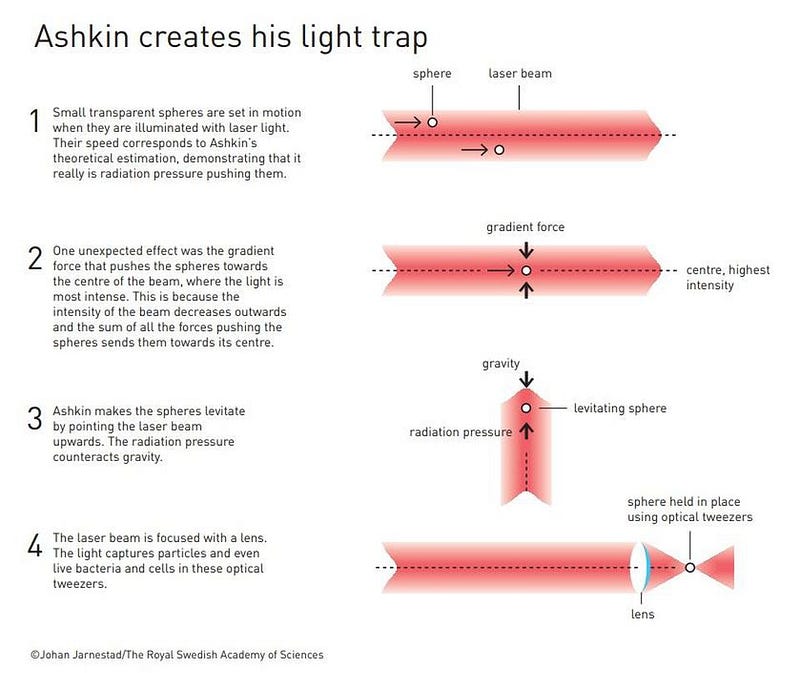
Arthur Ashkin, winner of half the Nobel Prize for 2018, invented a tool known as optical tweezers. Through the application of lasers with a specific configuration, physical objects, from tiny molecules to entire bacteria, could be pushed around. The way these optical tweezers operate is by pushing small particles towards the center of a laser beam and pinning them there. It isn’t about high levels of power; it’s about high levels of precise control.
By slightly adjusting the properties of the laser involved, the pinned particles can be guided in specific ways. The great breakthrough that led to Ashkin’s Nobel came in 1987, when he used the optical tweezer technique to capture living bacteria without inflicting any harm upon them. Since that advance, optical tweezers have been used to study biological systems and investigate the machinery of life, from the scale of individual cells on down.
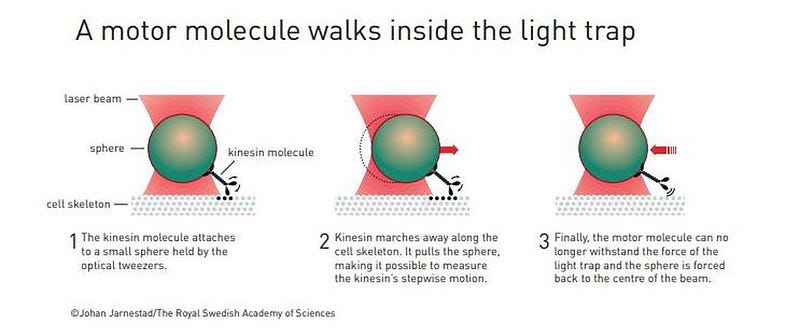
Sometimes, though, the thing you want to control isn’t the electric and magnetic fields, but rather the power and pulse frequency of your laser. We think of laser light as being continuously emitted, but that isn’t always necessarily the case. Instead, another option is to save up that laser light you’re producing and to emit all of that energy in a single, short burst. You can either do this all in one go, or you can do it repeatedly, potentially with relatively high frequencies.
The primary danger in building up a large, short, ultra-powerful pulse, like the type you’d use in inertial confinement fusion, is that you’ll destroy the material used to amplify the light. The ability to emit a short-period, high-energy pulse was another one of the holy grails of laser physics. Unlocking that power would mean opening up a suite of new applications.
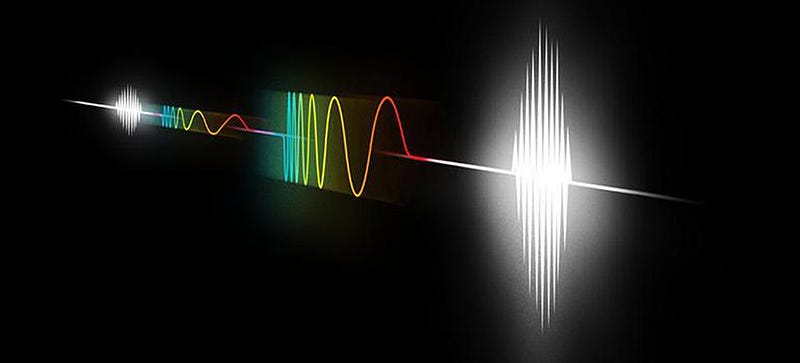
That’s exactly the problem that the winners of the other half of the 2018 Nobel Prize — Gérard Mourou and Donna Strickland — solved. In 1985, they published an article together where they detailed exactly how they created an ultra-short, high-intensity laser pulse in a repetitive fashion. The amplifying material used was unharmed. The basic setup was four simple-in-principle, but monumental-in-practice, steps:
- First, they created these relatively standard laser pulses.
- Then, they stretched the pulses in time, which reduces their peak power and makes them less destructive.
- Next, they amplified the time-stretched, reduced-power pulses, which the material used for amplification could now survive.
- And finally, they compressed the now-amplified pulses in time.
By making the pulse shorter, more light becomes packed together in the same space, leading to a massive increase in pulse intensity.
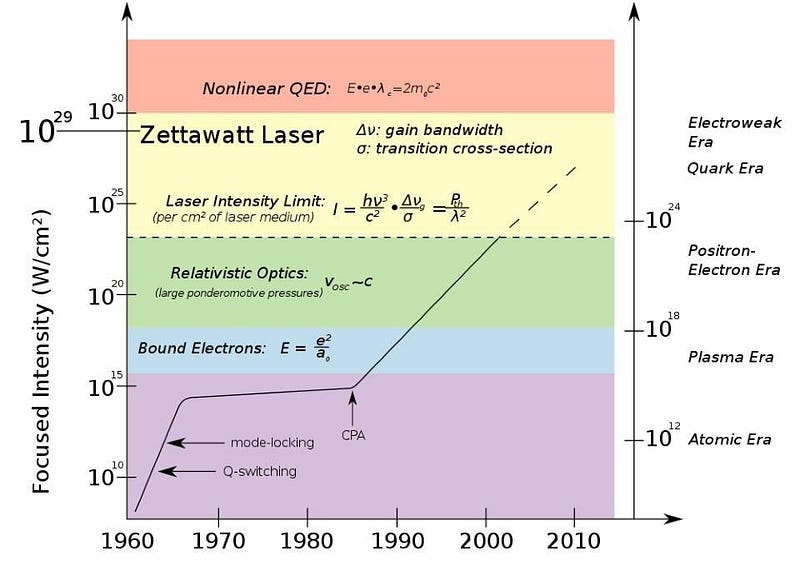
The new technique, known as chirped pulse amplification, became the new standard for high-intensity lasers; it is the technology used in the millions of corrective eye surgeries performed annually. Mourou’s and Strickland’s pioneering work became the basis of Strickland’s Ph.D. thesis, and there are more applications being discovered for their work across a wide variety of fields and industries.
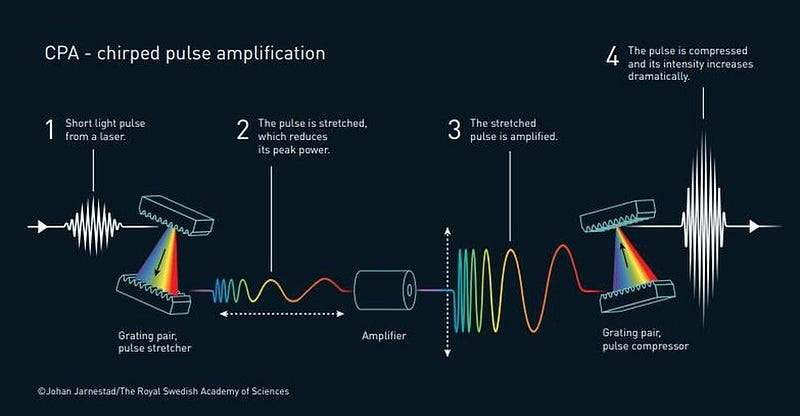
Since its invention a mere 60 years ago, lasers have woven their way into innumerable aspects of our lives. The Nobel Prize was established to reward scientists and scientific advances that would have the greatest positive impact on humanity. Advances in laser technology have certainly improved our capabilities across a wide variety of fields, and fit that criterion spectacularly. On the merits of the science alone, as well as its impacts on society, the Nobel society clearly got the 2018 award right.
But there’s also another way they got it right: by choosing Donna Strickland to share in the 2018 award, this marks just the third time in the Nobel’s history that a woman has shared in the physics prize.
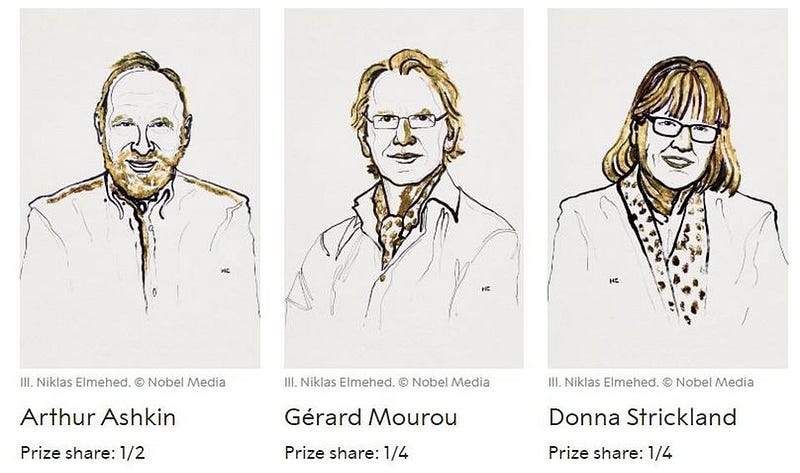
Strickland joins Marie Curie (1903) and Maria Goeppert-Mayer (1963) as the third woman to win a share of the Nobel Prize. The field of physics has seen generations of Nobel-worthy women go unrewarded, including five of the greatest Nobel snubs in history:
- Cecilia Payne (who discovered what the stars are made of),
- Chien-Shiung Wu (who discovered parity violation in particle physics),
- Vera Rubin (who discovered the bizarre behavior of galactic rotation curves),
- Lise Meitner (who discovered nuclear fission), and
- Jocelyn Bell-Burnell (who discovered the first pulsar).
Upon learning that she’d be receiving the Nobel, making her the first woman in 55 years to be so awarded, Strickland noted:
We need to celebrate women physicists because we’re out there, and maybe in time it will move forward. I’m honored to be one of those women.
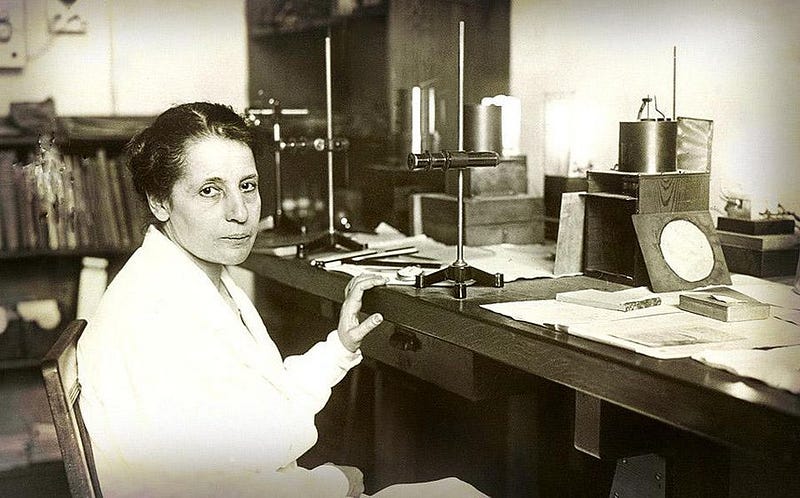
It has often been noted, such as by the AAUW, that one of the barriers to accepting women in STEM as normal is a lack of representation at the highest levels. In selecting Donna Strickland as a Nobel Laureate, in the same year that Jocelyn Bell-Burnell was awarded the $3M Breakthrough Prize, we’re stepping closer to a world where women can expect to receive equal treatment and equal respect to men in the scientific workplace.
Whether your research will win you the Nobel Prize — or even will be successful — is often largely a matter of luck. But rewarding those who do good work, get lucky in how nature responds, and leads to the development of technological applications that serve humanity is what the Nobel is all about. This year, there can be no doubt the selection committee got it right. Let’s all celebrate Ashkin, Mourou, and Strickland as your 2018 Nobel Laureates in Physics!
Ethan Siegel is the author of Beyond the Galaxy and Treknology. You can pre-order his third book, currently in development: the Encyclopaedia Cosmologica.





